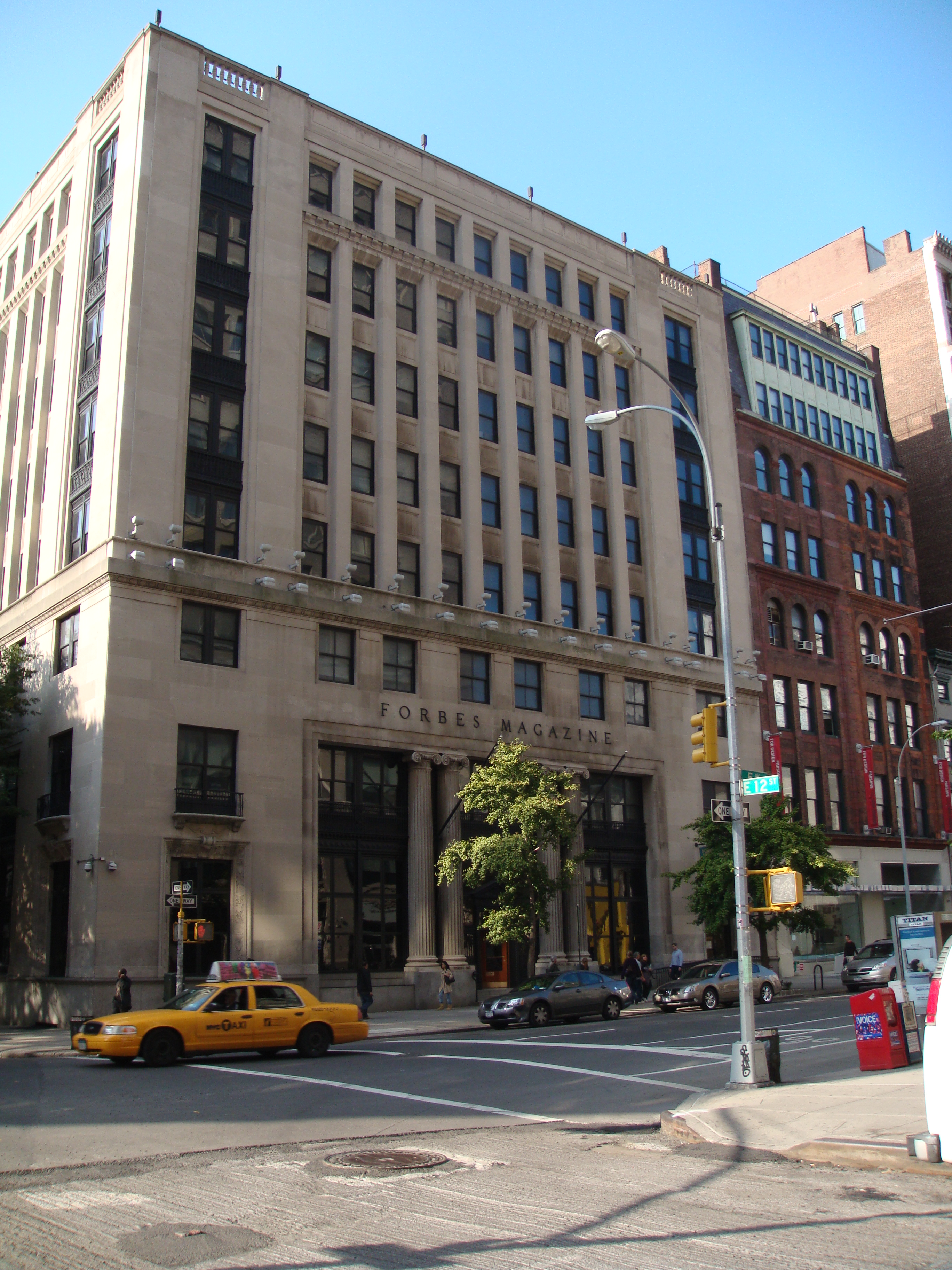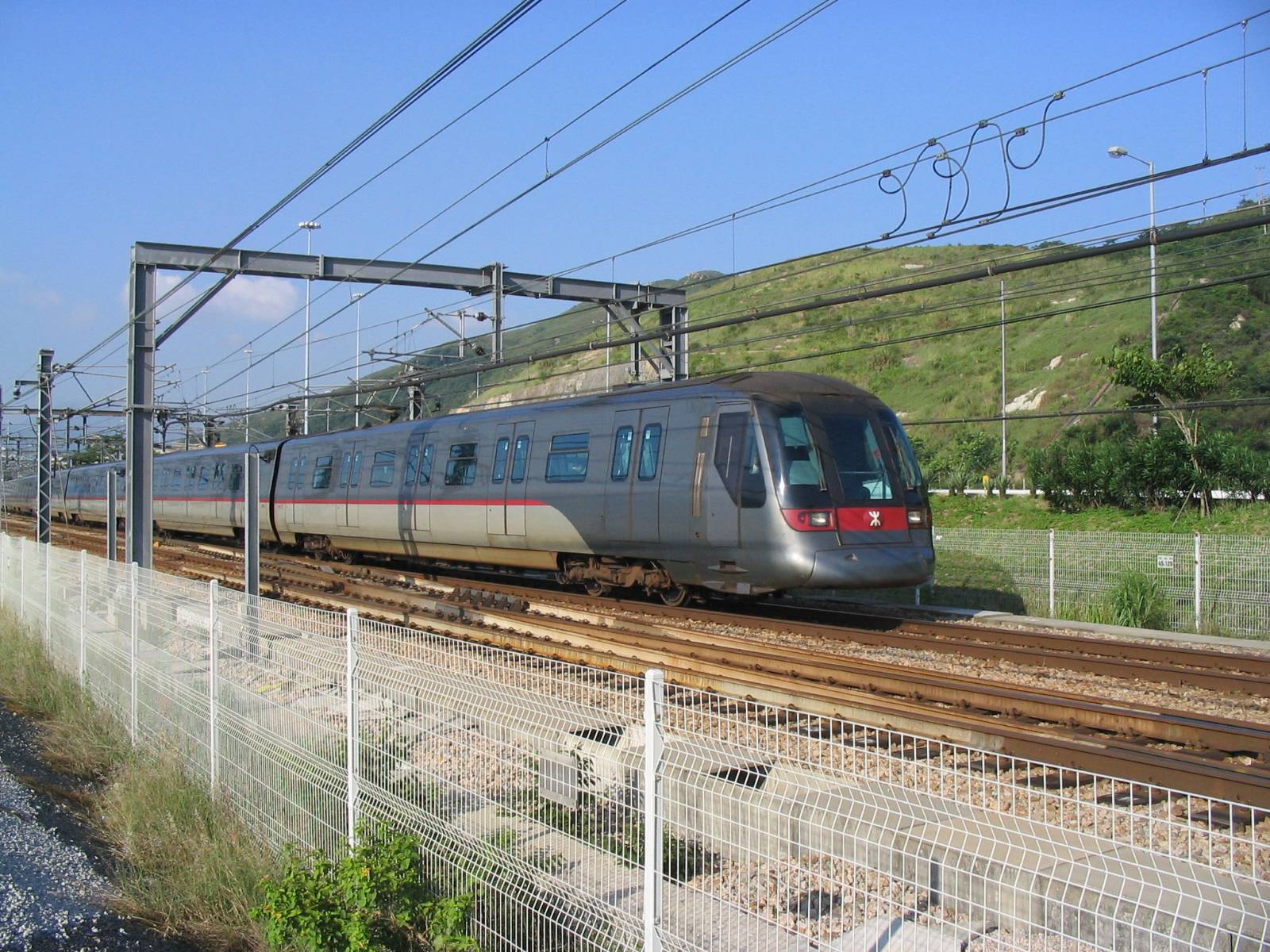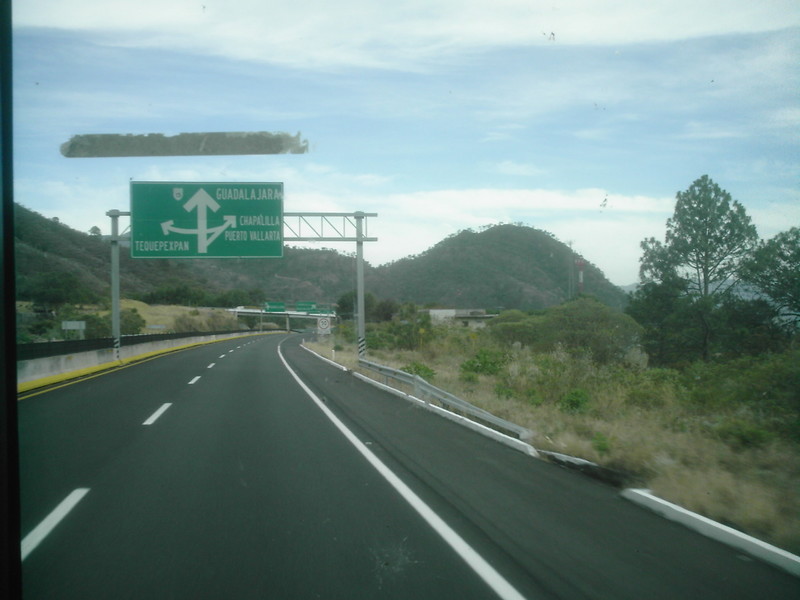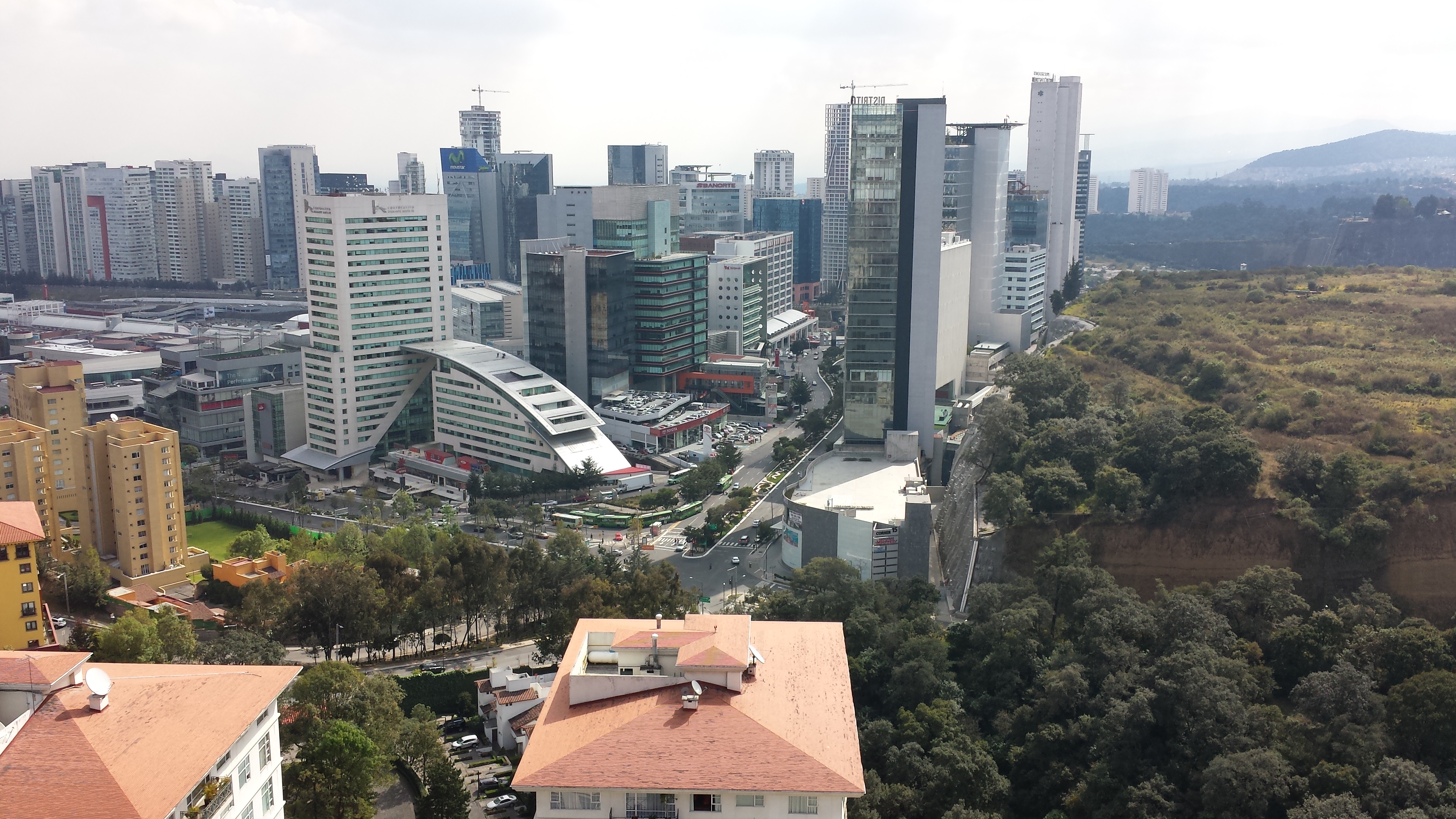|
Toluca–Mexico City Commuter Rail
The Toluca–Mexico City commuter rail (Spanish: ''Tren Interurbano de Pasajeros Toluca-Valle de México'') project is a commuter rail line currently under construction. Also known as Interurban Train Mexico City–Toluca, the passenger railway line will connect the cities of Toluca and Mexico City. The project was announced by President Enrique Peña Nieto on 1 December 2012. Construction began in July 2014. As of October 2020, it was estimated to open in 2023. Background As a part of Enrique Peña Nieto's Presidency to offer public transport from Toluca to Mexico City, a cost–benefit analysis report was drafted and published in November 2013. The report proposed several routes. The three routes were concentrated to the metro terminals of Cuatro Caminos, Tacubaya, and Observatorio. Ultimately, the third route along Avenida Las Torres to Observatorio was chosen in order to avert future sprawl, avoid deforestation in the Sierra de las Cruces, and prevent pollution of a ... [...More Info...] [...Related Items...] OR: [Wikipedia] [Google] [Baidu] |
Commuter Rail
Commuter rail, or suburban rail, is a passenger rail transport service that primarily operates within a metropolitan area, connecting commuters to a central city from adjacent suburbs or commuter towns. Generally commuter rail systems are considered heavy rail, using electrified or diesel trains. Distance charges or zone pricing may be used. The term can refer to systems with a wide variety of different features and service frequencies, but is often used in contrast to rapid transit or light rail. Similar non-English terms include ''Treno suburbano'' in Italian, '' Cercanías'' in Spanish, Aldiriak in Basque, Rodalia in Catalan/Valencian, Proximidades in Galician, '' Proastiakos'' in Greek, ''Train de banlieue'' in French, '' Banliyö treni '' in Turkish, ''Příměstský vlak'' or ''Esko'' in Czech, '' Elektrichka'' in Russian, ''Pociąg podmiejski '' in Polish and ''Pendeltåg'' in Swedish. Some services share similarities with both commuter rail and high-frequency ... [...More Info...] [...Related Items...] OR: [Wikipedia] [Google] [Baidu] |
Forbes
''Forbes'' () is an American business magazine owned by Integrated Whale Media Investments and the Forbes family. Published eight times a year, it features articles on finance, industry, investing, and marketing topics. ''Forbes'' also reports on related subjects such as technology, communications, science, politics, and law. It is based in Jersey City, New Jersey. Competitors in the national business magazine category include '' Fortune'' and ''Bloomberg Businessweek''. ''Forbes'' has an international edition in Asia as well as editions produced under license in 27 countries and regions worldwide. The magazine is well known for its lists and rankings, including of the richest Americans (the Forbes 400), of the America's Wealthiest Celebrities, of the world's top companies (the Forbes Global 2000), Forbes list of the World's Most Powerful People, and The World's Billionaires. The motto of ''Forbes'' magazine is "Change the World". Its chair and editor-in-chief is St ... [...More Info...] [...Related Items...] OR: [Wikipedia] [Google] [Baidu] |
Traction Maintenance Depot
The motive power depot (MPD) or locomotive depot, or traction maintenance depot (TMD), is the place where locomotives are usually housed, repaired and maintained when not being used. They were originally known as "running sheds", "engine sheds" or, for short, just sheds. Facilities are provided for refuelling and replenishing water, lubricating oil and grease and, for steam engines, disposal of the ash. There are often workshops for day to day repairs and maintenance, although locomotive building and major overhauls are usually carried out in the locomotive works. (Note: In American English, the term ''depot'' is used to refer to passenger stations or goods (freight) facilities and not to vehicle maintenance facilities.) German practice The equivalent of such depots in German-speaking countries is the ''Bahnbetriebswerk'' or ''Bw'' which has similar functions, with major repairs and overhauls being carried out at '' Ausbesserungswerke''. The number of these reduced drast ... [...More Info...] [...Related Items...] OR: [Wikipedia] [Google] [Baidu] |
Metro Report International
''Metro Report International'' is a business journal for urban transport professionals which covers the metro, light rail, tram and commuter rail industries worldwide. It includes news and articles looking at urban transport around the world, with maps and project data. Coverage of the rolling stock market includes detailed listings of metro car and low-floor tram orders. News is published online, with the printed magazine issued twice per year. History ''Metro Report International'' began as ''Developing Metros'', which was launched in 1985 as an annual supplement to '' Railway Gazette International''. ''Developing Metros'' was renamed ''Metro Report'' in 1998, and to ''Metro Report International'' in 2008. ''Metro Report International'' is part of the Railway Gazette Group within DVV Media Group, which is part of the Hamburg Hamburg (, ; nds, label=Hamburg German, Low Saxon, Hamborg ), officially the Free and Hanseatic City of Hamburg (german: Freie und Hansestadt Hamb ... [...More Info...] [...Related Items...] OR: [Wikipedia] [Google] [Baidu] |
Electric Multiple Unit
An electric multiple unit or EMU is a multiple-unit train consisting of self-propelled carriages using electricity as the motive power. An EMU requires no separate locomotive, as electric traction motors are incorporated within one or a number of the carriages. An EMU is usually formed of two or more semi-permanently coupled carriages, but electrically powered single-unit railcars are also generally classed as EMUs. The great majority of EMUs are passenger trains, but versions also exist for carrying mail. EMUs are popular on commuter and suburban rail networks around the world due to their fast acceleration and pollution-free operation. Being quieter than diesel multiple units (DMUs) and locomotive-hauled trains, EMUs can operate later at night and more frequently without disturbing nearby residents. In addition, tunnel design for EMU trains is simpler as no provision is needed for exhausting fumes, although retrofitting existing limited-clearance tunnels to accommodate th ... [...More Info...] [...Related Items...] OR: [Wikipedia] [Google] [Baidu] |
Construcciones Y Auxiliar De Ferrocarriles
Construcciones y Auxiliar de Ferrocarriles (Grupo CAF, literally "Construction and Other Railway Services") is a Spanish publicly listed company which manufactures railway vehicles and equipment and buses through its Solaris Bus & Coach subsidiary. It is based in Beasain, Basque Autonomous Community, Spain. Equipment manufactured by Grupo CAF includes light rail vehicles, rapid transit trains, railroad cars and locomotives, as well as variable gauge axles that can be fitted on any existing truck or bogie. Over the 20 years from the early 1990s, CAF benefited from the rail investment boom in its home market in Spain to become a world player with a broad technical capability, able to manufacture almost any type of rail vehicle. CAF has supplied railway rolling stock to a number of major urban transit operators around Europe, the US, South America, East Asia, India, Australia and North Africa. History ''CAF'' was an acronym for the earlier name of ''Compañía Auxiliar de Fer ... [...More Info...] [...Related Items...] OR: [Wikipedia] [Google] [Baidu] |
Secretariat Of Communications And Transportation (Mexico)
The Secretariat of Infrastructure, Communications and Transportation (''Secretaría de Infraestructura, Comunicaciones y Transportes'', SICT) of Mexico is the national federal entity that regulates commercial road traffic and broadcasting. Its headquarters are in the Torre Libertad on Reforma in Mexico City but some aspects of the department still function at the old headquarters located at the intersection of Eje Central and Eje 4 Sur (Xola). The building is decorated with murals created by arranging small colored stones on the building's outer walls. Historical nomenclature The forerunner of the modern-day SCT was created in 1891 under President Porfirio Díaz and was known as the Secretariat of Communications ''(Secretaría de Comunicaciones)''; its first incumbent as secretary was Manuel González Cosío. In 1920 it was renamed to the Secretariat of Communications and Public Works ''(Secretaría de Comunicaciones y Obras Públicas;'' "SCOP"). In 1959, it changed names to ' ... [...More Info...] [...Related Items...] OR: [Wikipedia] [Google] [Baidu] |
Mexican Peso
The Mexican peso (Currency symbol, symbol: $; ISO 4217, code: MXN) is the currency of Mexico. Modern peso and dollar currencies have a common origin in the 16th–19th century Spanish dollar, most continuing to use dollar sign, its sign, "$". The current ISO 4217 code for the peso is ''MXN''; prior to the #Nuevo peso, 1993 revaluation, the code ''MXP'' was used. The peso is subdivided into 100 , represented by "cent sign, ¢". The Mexican peso is the 15th most traded currency in the world, the third most traded currency from the Americas (after the United States dollar and Canadian dollar), and the most traded currency from Latin America. , the peso's exchange rate was $20.50 per euro, $19.80 per U.S. dollar, and $15.50 per Canadian dollar. History Etymology The name was first used in reference to ('gold weights') or ('silver weights'). The Spanish word means 'weight'. Compare the British pound sterling. Other countries that use are Argentine peso, Argentina, Chilean pes ... [...More Info...] [...Related Items...] OR: [Wikipedia] [Google] [Baidu] |
Mexican Federal Highway 15D
Federal Highway 15D (Carretera Federal 15D) is the name for toll highways paralleling Federal Highway 15. The toll segments of Highway 15D include some of the most significant highways in the country along the Nogales-Mexico City corridor. The highway is the southern terminus of the CANAMEX Corridor, a trade corridor that stretches from Mexico north across the United States to the Canadian province of Alberta. Two segments of Federal Highway 15D (México-La Marquesa and Guadalajara-Tepic) are among the top five most expensive toll roads in Mexico, according to a 2016 analysis by Carmatch. Sonora Estación Don-Nogales and bypasses With of length, Highway 15D's segment in Sonora, formerly known as Estación Don-Nogales, runs the length of the state of Sonora and includes access to most of the state's major population centers. It is maintained by Caminos y Puentes Federales, which charges cars 340 pesos to travel the length of the road, including its four bypasses of Nogales ( ... [...More Info...] [...Related Items...] OR: [Wikipedia] [Google] [Baidu] |
Mexican Federal Highway 15
Federal Highway 15 ( es, Carretera Federal 15, Fed. 15 ) is Mexico 15 International Highway or Mexico- Nogales Highway, is a primary north-south highway, and is a free part of the federal highways corridors ( es, los corredores carreteros federales) of Mexico. The highway begins in the north at the Mexico–United States border at the Nogales Port of Entry in Nogales, Sonora, and terminates to the south in Mexico City. Fed. 15 from Nogales to Mazatlán runs parallel to Fed. 15D, a tolled (cuota) part of the federal highways corridors (los corredores carreteros federales); the portion of this northern stretch from the town of Eldorado southward within the Sinaloa is a limited-access highway."Rand McNally Road Atlas", Rand McNally & Company, 1998, p. 120 North of the U.S.-Mexico border, the highway continues to the north from the Port of Entry, as I-19 Business. The highway is the southern terminus of the CANAMEX Corridor, a trade corridor that stretches from M ... [...More Info...] [...Related Items...] OR: [Wikipedia] [Google] [Baidu] |
Toluca International Airport
Toluca International Airport, officially Licenciado Adolfo López Mateos International Airport is an international airport in Toluca, State of Mexico, Mexico. It is part of the Mexico City Metropolitan Airport Group, and it is being improved and promoted to handle some traffic for the city of Toluca, but it also serves as a low-cost carrier airport for Mexico City, serving VivaAerobús and Volaris, but in the past at different times also by Interjet and Aeroméxico. The airport is named after President Adolfo López Mateos. It is considered as the main alternate airport for Mexico City International Airport since it is only , approximately 30 minutes, away from the Santa Fe financial district. This airport has the second longest runway in Mexico, after the Felipe Ángeles International Airport. Overview Construction of the airport began in 1970, as ordered by Jorge Jiménez Cantú, as a reliever airport for the Mexico City metropolitan area. It was inaugurated in 1984. T ... [...More Info...] [...Related Items...] OR: [Wikipedia] [Google] [Baidu] |
Santa Fe, Mexico City
Santa Fe is one of Mexico City's major business districts, located in the west part of the city in the ''alcaldías'' (boroughs) of Cuajimalpa and Álvaro Obregón. The Paseo de la Reforma avenue and Constituyentes avenue are the primary means of access to the district from the central part of Mexico City. Santa Fe consists mainly of highrise buildings surrounding a large shopping mall, Centro Santa Fe, which is currently the largest mall in Latin America. The district also includes a residential area and three university campuses, among other facilities.The Toluca–Mexico City commuter rail, due to open in 2023, will also improve mobility and development in the district. History The current area of Santa Fe took its name from Santa Fé de México, the 16th century ''Pueblo Hospital of Santa Fe'', founded by Vasco de Quiroga in 1532. The ruins of the hospital still exist in the area. Colonial period and independence During the Spanish colonial era (late 15th century ... [...More Info...] [...Related Items...] OR: [Wikipedia] [Google] [Baidu] |








